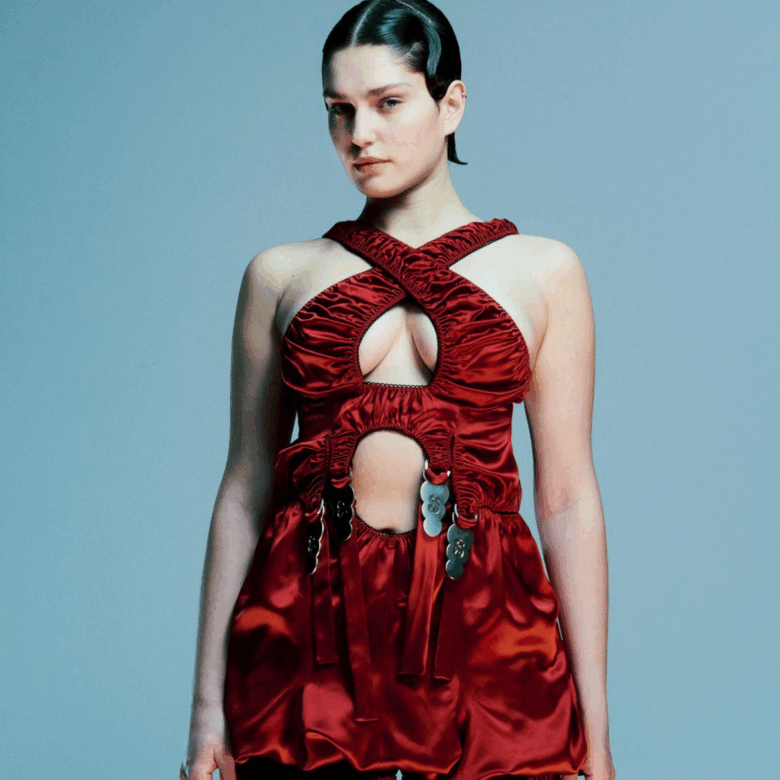Munroe Bergdorf envisions a new world

2025 has been a hell of a year so far for Munroe Bergdorf — but then so has almost every year since the model, writer and activist first shot to prominence over a decade ago. Whether it’s standing at the forefront of UK trans activism, appearing as the first trans woman on the cover of Cosmopolitan, writing a memoir, presenting her own documentary, making a podcast, being a contributing editor at British Vogue, or speaking at the likes of Oxford and Princeton Universities, it seems like there’s nothing that this multi-hyphenate can’t do. Now, the thirty seven year old has both a new book, Talk To Me: How to talk about the things that matter, and a new documentary, Love & Rage: Munroe Bergdorf, coming out within mere days of each other after working on both projects for several years.
While this might seem like a win for the trans community, at the same time, the UK Supreme Court’s recent ruling that the term ‘woman’ in the Equality Act should refer to biological women alone has had deeply distressing and wide-reaching implications for Bergdorf and the trans community. And, for the activist, having to release such deeply personal works into a world that feels especially hostile at this moment is bittersweet. “I feel like it’s a good time and also a difficult time,” Bergdorf tells me. “It is good timing, in terms of the subject matter of the book and the film. But for me personally, it’s a scary time, because after the Supreme Court ruling and the EHRC [Equality and Human Rights Commission] guidance came out, it definitely takes a lot to process that. Your human rights being stripped away in real time is a lot to deal with.”
Emily Moss: So, what was your initial reaction to being approached for the documentary four years ago?
Munroe Beradorf: The opportunity of having your life documented is so rare. I’m in my late thirties, and I was like, I’ve still got a lot of living to do – is my story really complete enough to even do a documentary? And then I just thought to myself, how many trans people get to tell their stories while they’re alive? How many trans people get to have their presence documented in this way while we’re consistently erased from society? I felt both scared to put myself out there, but also I’d been putting myself out there for the best part of a decade and I just felt like it was almost my responsibility to say yes. I was uncertain in the beginning, because I didn’t really know how it would
look — it’s Universal, one of the biggest studios in the world, and I just really wanted to get it right. But they gave me so much creative control from what we would cover to who would direct it, to who would produce it. I had a say in everything.


EM: How do you feel looking back on it?
MB: It felt like stepping into the unknown, but I often feel like those are the most beneficial experiences. I’m really proud of what we’ve created. It’s a time capsule of a time that will be looked back on, and we will all be asking
ourselves, how did we allow our government and our media to treat a vulnerable community with such disdain and such recklessness? Because I truly believe that in years to come, this ruling will actually affect everybody.
EM: I think that segues quite nicely into what I wanted to ask about your book — what inspired the transition from writing your memoir, Transitional, to a guide on activism?
MB: I don’t think there’s one clear answer. I think we are living in really complicated times. And it’s becoming more and more obvious how tribal we’re all becoming. Not necessarily just in terms of what political party we’re
part of, but how identity politics has been weaponised across the board, and how we’re being turned against each other in the guise of protecting certain groups. So the thing that I really wanted to try to bust with Talk To Me, was to address how we’re talking to each other — but furthermore, how we’re talking about each other. We are now talking about each other as concepts rather than human beings. And that’s most prevalent in how news stories are formed about migrants — how we don’t talk about people fleeing war and persecution, and they are reduced to small boats. We don’t talk about trans people — we are being talked about as an ideology.
And the problem is that we are now navigating an environment where respect and dignity and empathy and compassion have been so reduced that we aren’t even talking to each other with a means to find a solution that benefits us both. It’s almost like we’re acting in spite of each other sometimes, and the problem with that is that it just swings back. I really hope that when people read it they think, how can we live in a new world? How can we envision a new world outside of this polarity — outside of this binary thinking, outside of this tribalism? What does that world look like?
This excerpt was taken from HUNGER Issue 35: F**k it. Stay tuned for the full story.
- PhotographerJordan Rossi
- WriterEmily Moss
- Fashion DirectorMarco Antonio
- Make-Up ArtistThembi Mkandla at CREATIVES AGENCY using MAC
- Hair Stylist Jay Birmingham using JAY B HAIRCARE
- ManicuristNikki Panic at ONE REPRESENTS using JOONBYRD
- Photographer's AssistantsMarcus Lister, Piotr Rulka
- Make-Up AssistantFreya Paxton
- Hair AssistantSimon Blay
- Production RunnerAodhfin Traquair
- RetouchingAlice Constance




